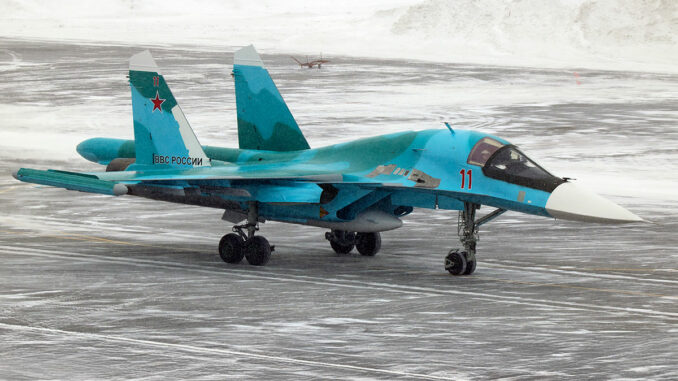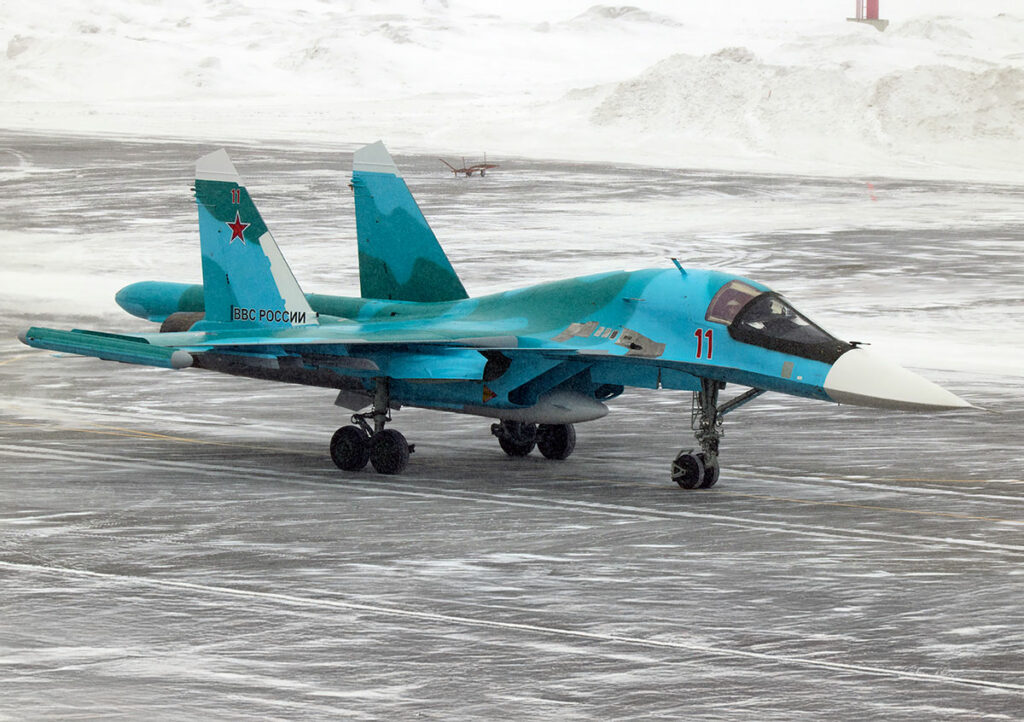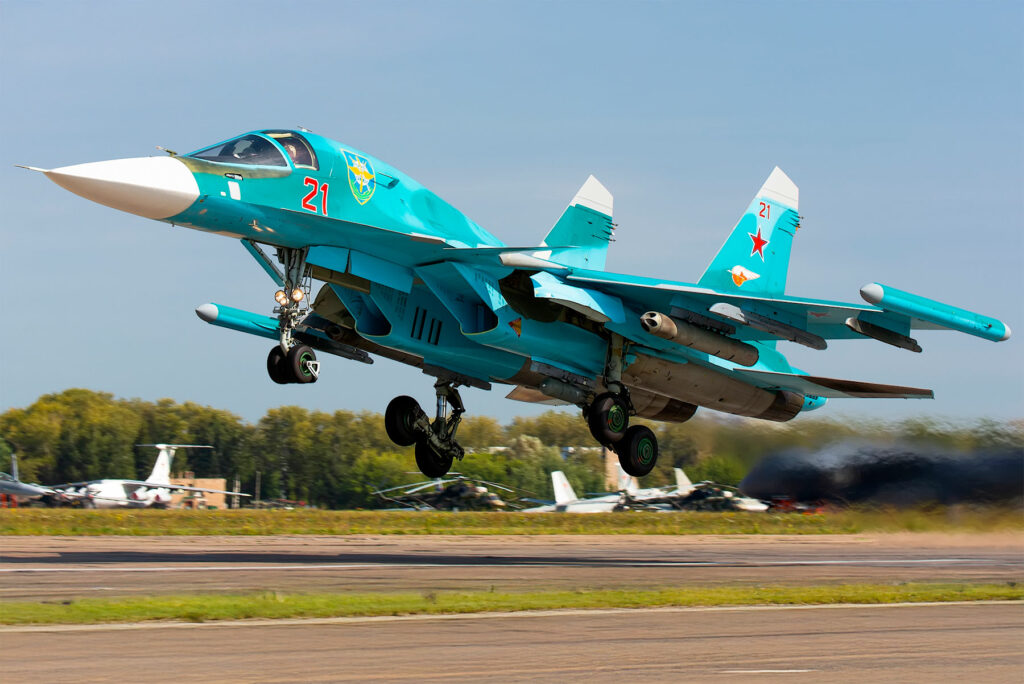
Russia moves Su-34s to Engels-2, marking a major strategic repositioning. Investigation into the reasons and military implications.
The deployment of Su-34s to Engels-2 raises a number of strategic questions. Why move part of the Su-34 fleet, essential to Russian air operations, to a base usually reserved for strategic bombers? Available data and military analyses indicate that this is an effort to protect these aircraft, optimize their maintenance and muddy the waters about the real capabilities of the Russian air force. This article explores the possible reasons, military implications and economic impact of this maneuver.

A strategic repositioning: protect and optimize
On January 21, 2025, observers noticed an unusual presence of Su-34s at the Engels-2 base. Traditionally reserved for strategic bombers, this base was already home to Tu-160s and Tu-95MSs. The arrival of nine Su-34s, representing around 7.5% of the active fleet, represents a significant change. Located around 700 km from the front lines, Engels-2 is a deep-lying base, away from Ukrainian strikes, particularly those by ATACMS missiles, which can have a range of up to 300 km.
The reasons for this decision:
- Protection of strategic equipment:
Sheltering these aircraft preserves essential resources for future operations. The Su-34s, capable of air-to-ground and air-to-air missions, are at the heart of Russian strikes. - Advanced maintenance:
Engels-2 is equipped with infrastructures adapted to heavy bombers. Although these facilities are not optimized for Su-34s, they do offer complex maintenance capabilities. However, this raises questions about the effectiveness of such a transfer: why only 9 aircraft, and what kind of repairs or upgrades are really possible? - Strategic confusion:
Mixing Su-34s with strategic bombers could sow doubt among outside observers. This strategy of concealment could prevent a clear reading of Russian operational capabilities, thus limiting opposing countermeasures.
Technical capabilities of the Su-34
The Su-34, nicknamed “Fullback” by NATO, is a multi-role aircraft designed to meet modern requirements. Derived from the Su-27, it was designed for precision strikes and complex missions. Key features include
- Dimensions and weight: Length 22.9 m, wingspan 14.7 m, maximum takeoff weight 45,100 kg.
- Powertrain and performance: Two Saturn AL-31FM1 engines, each generating a thrust of 13,500 kgf. Maximum speed of 1,900 km/h at high altitude. Range: 4,000 km, extendable to 14,000 km with in-flight refuelling.
- Armament: Payload of 14 tonnes on 12 load points. Air-to-air missiles (R-77, R-73) and air-to-ground guided munitions (KAB-500).
- Advanced avionics: V004 terrain-following radar, infrared search systems and Khibiny electronic countermeasures.
These features enable the Su-34 to fulfill several roles: strategic strikes, close air support and reconnaissance.

Strategic and economic impact
The move of the Su-34 to Engels-2 has important implications on several fronts:
- Operational flexibility:
This relocation broadens the Su-34’s field of action, while moving it away from areas of direct threat. It strengthens Russia’s ability to retain intact air assets for future missions. - Costs and logistics:
Operating Su-34s on a dedicated strategic bomber base requires costly adjustments. Estimates put the hourly operating cost of a Su-34 at around €30,000, plus the cost of maintenance and logistics on a base not designed for these aircraft. - Tactical confusion and misinformation:
By positioning Su-34s on a strategic base, Russia could be seeking to confuse opposing analyses of its real capabilities. This move could give the impression of an air force more deployed than it actually is.
War Wings Daily is an independant magazine.